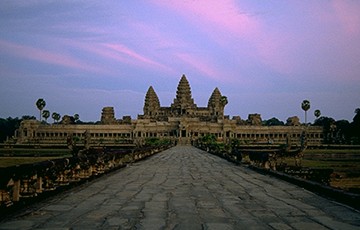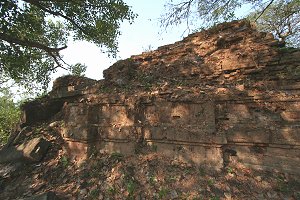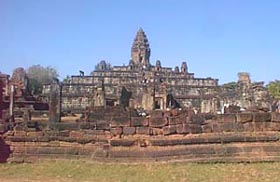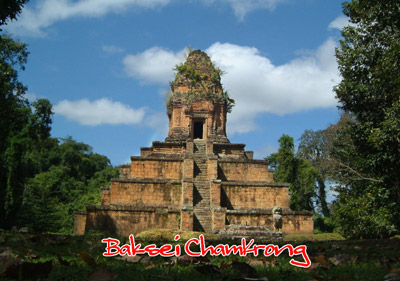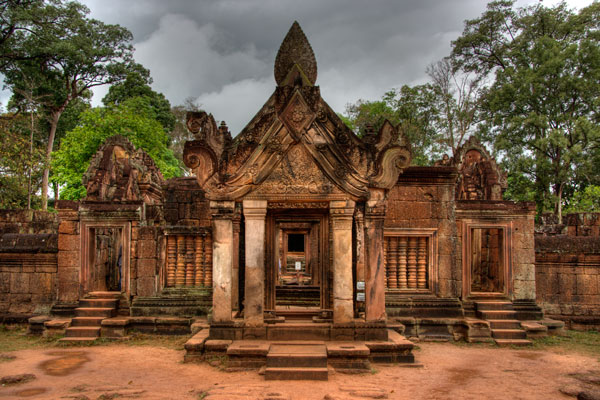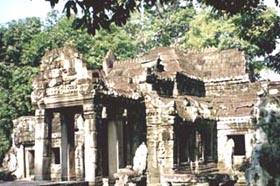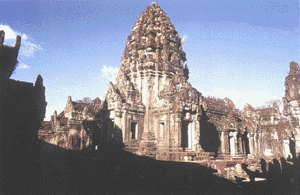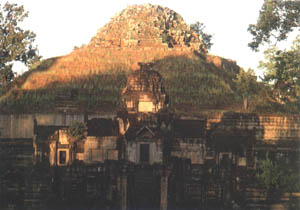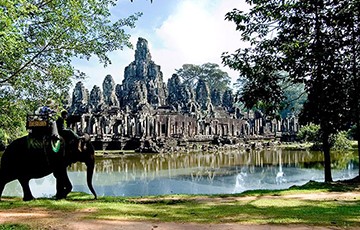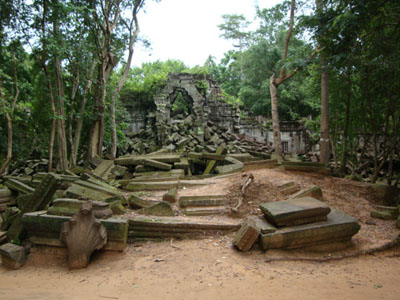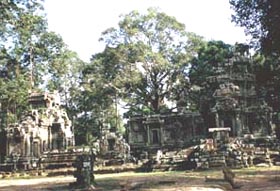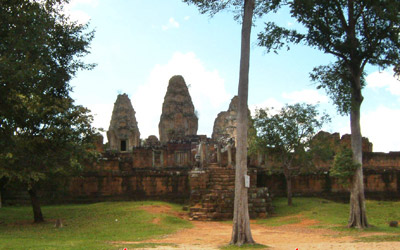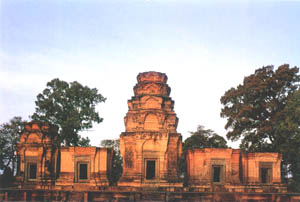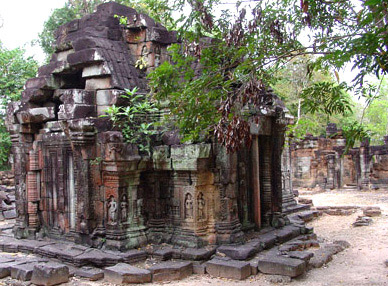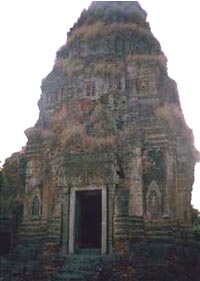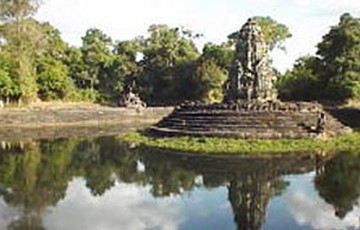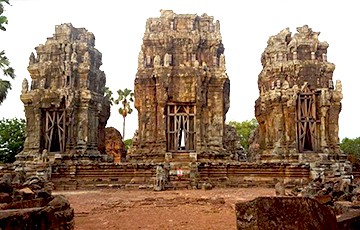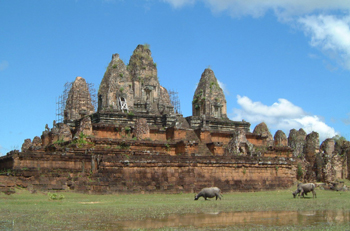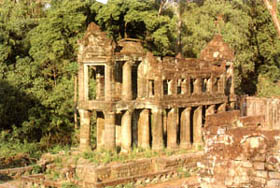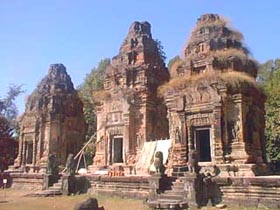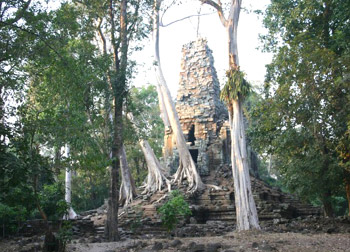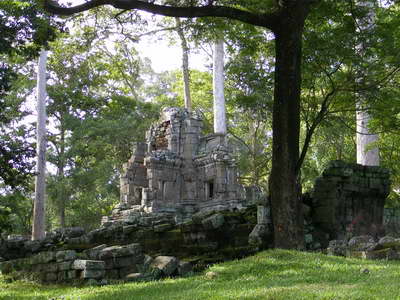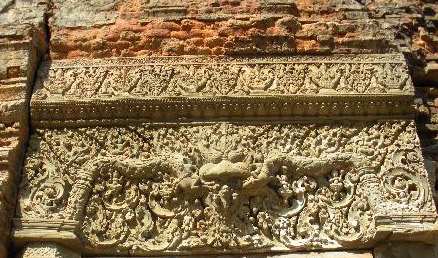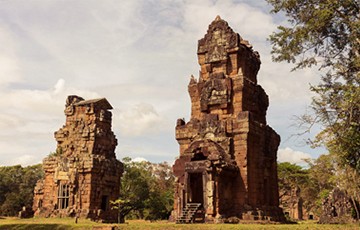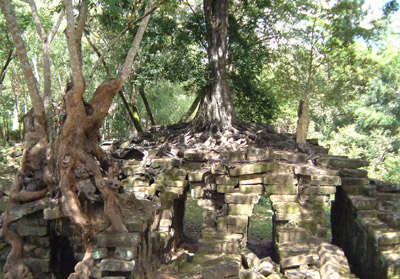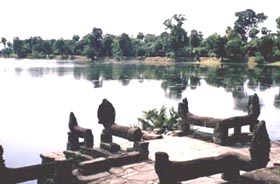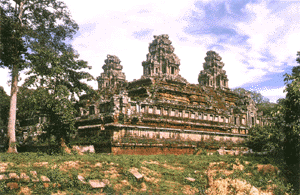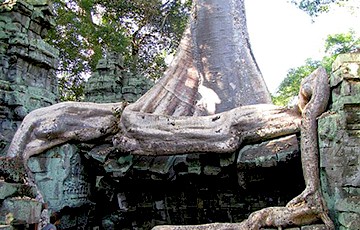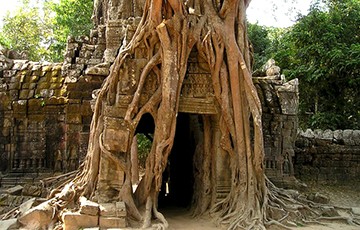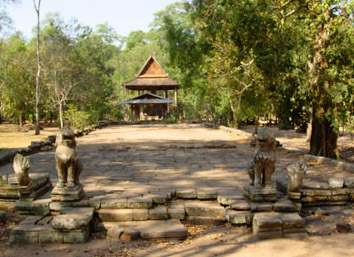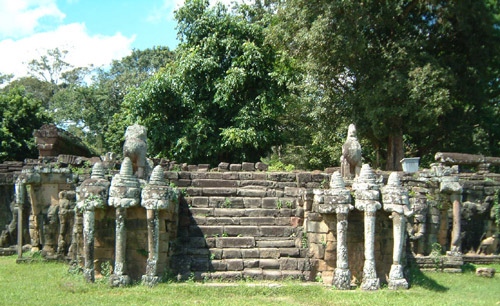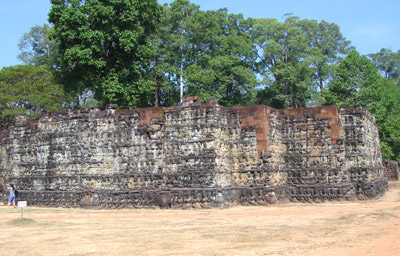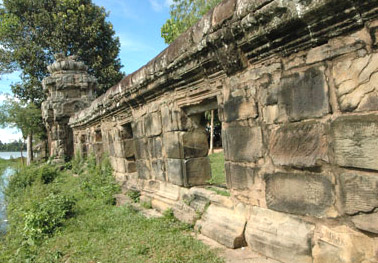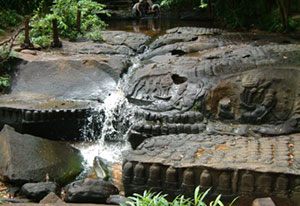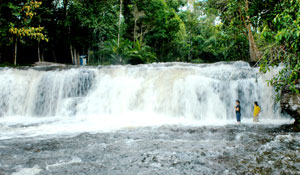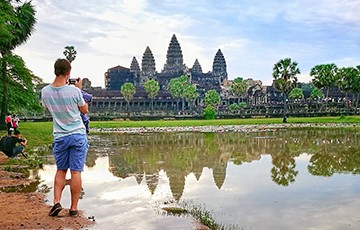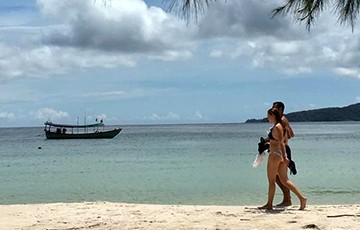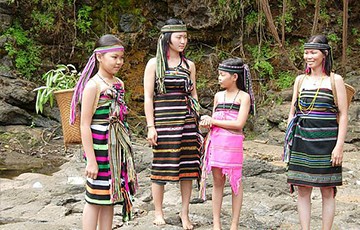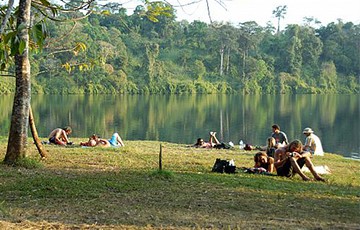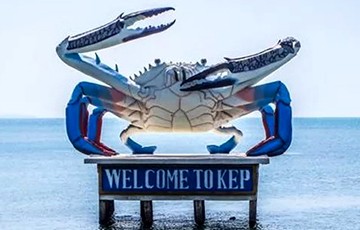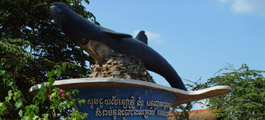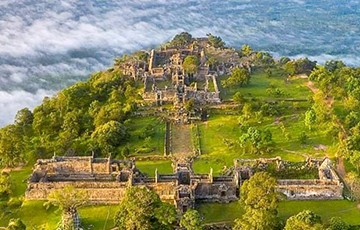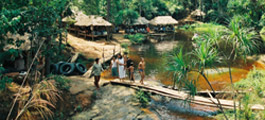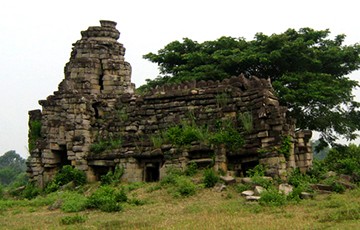Phimean Akas - Aerial Palace
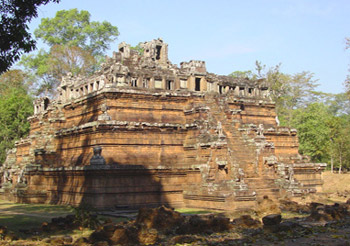 Phimeanakas is located inside the enclosure of the Royal Palace of Angkor Thom north of Baphuon
Phimeanakas is located inside the enclosure of the Royal Palace of Angkor Thom north of Baphuon
Phimeanakas can be reached on foot either from Prah Palilay or from the Terrace of the Elephants. Pass through the gap in the south side of the enclosing wall of Prah and walk straight for about 200 meters (656 feet); turn left to the east and right at the first path, then follow it until you reach the temple. Or walk across the Terrace of Elephants at the entrance closest to the Victory Gate road and walk through an entry tower; then follow the path until you reach the temple.
Alternatively, return to the main road beside the Terrace of the Leper King, turn right and turn right again on the first road, then drive straight to the monument.
Enter Phimeanakas from the east entrance. It is possible to leave by the south gate and walk through a space in the enclosing wall to the east entrance of the Baphuon.
Tip: for those who want to climb to the Central Sanctuary, use the west stairway, which is in the best condition.
Phimean Akas was built in late tenth century-beginning of the 11th century by King Jayavamen V and Udayadityavarman I and dedicated to Hindu with art style of Kleang.
BACKGROUND
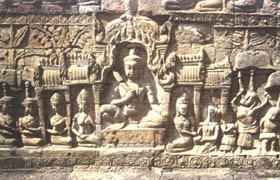 The temple of Phimeanakas is situated near the center of the area enclosed by the walls of the Royal Palace. It must originally have been crowned with a golden pinnacle, as Zhou Daguan described it as the Tower of Gold The temple is built of roughly hewn sandstone blocks and has little decoration.
The temple of Phimeanakas is situated near the center of the area enclosed by the walls of the Royal Palace. It must originally have been crowned with a golden pinnacle, as Zhou Daguan described it as the Tower of Gold The temple is built of roughly hewn sandstone blocks and has little decoration.
According to legend there was a gold tower (Phimeanakas ) inside the royal palace of Angkor the Great where a serpent-spirit with nine heads lived. The spirit appeared to the Khmer king disguised as a woman and the king had to sleep with her every night in the tower before he joined his wives and concubines in another part of the palace. If the king missed even one night it was believed he would die. In this way the royal lineage of the Khmer was perpetuated.
Layout
The general plan of Phimeanakas is rectangular. the temple originally consisted of a Central Sanctuary on a tiered base and an enclosing wall. The grounds around the sanctuary included several courts and ponds.
A laetrile wall encloses the temple and a second enclosing wall was built at a later date. Next there is a dry moat.
The sandstone entry tower at the east is in the shape of a cross with two wings; the lintels have a central motif of a head of a Kala and the window frame is inscribed. These features are not shown on the plan.: eave the tower and walk towards the main sanctuary. On the right (north) there is a pond with molding and laetrile steps. It may have been a part of the palace reserved for woman.
Return to the center walkway; after leaving the entry tower turn right and follow a path until you come to another large pond paved in laterite with sandstone steps. It was bordered by two stairways with bas0reliefs-along the side there are serpents in animal and human form surrounded by serpent-princesses; on the top there are male and female Garudas and mythical winged figures.
This entire area was probably crowned by a serpent balustrade and may have served as a gallery for the sovereign and dignitaries of the court. It is separated from the north-enclosing wall by paved causeways and from another pond on the east.
CENTRAL SANCTUARY
The single sanctuary is on a base with three laterite tiers. It is approached by four steep stairways, one on each side. These stairways are framed by walls with six projections- two per step –decorated with lions. Elephants once stood on sandstone pedestals in the corners of the base but today they are mostly broken.
UPPER TERRACE
The upper terrace affords a spectacular view of the neighboring temple of Baphuon. A narrow covered sandstone gallery (2) with windows and balusters at the edge of the upper terrace is a unique architectural feature. There were small pavilions at the corners but only vestiges remain.




